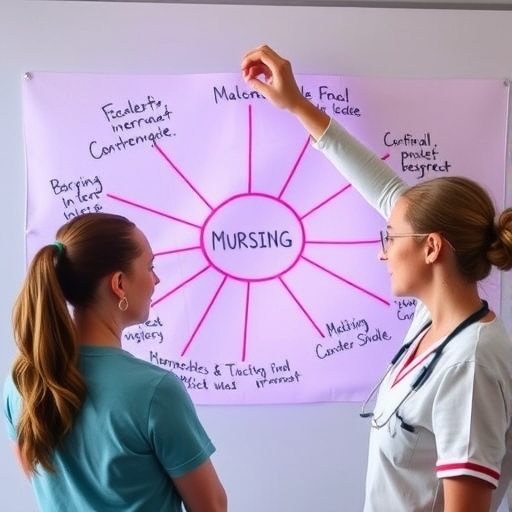In a new study that ultimately analyzed the genomes of nearly a quarter of a million men, a research team including UC San Francisco scientists has discovered that variants at a single site on Chromosome 6 are associated with a significantly higher risk of developing erectile dysfunction (ED).
The new study — a collaboration between researchers from the lab of UCSF Professor Nadav Ahituv, PhD, and researchers at Kaiser Permanente Northern California, the University of Utah and the University of Washington — will be published this week in Proceedings of the National Academy of Sciences.
Although earlier studies of twins have demonstrated that at least a third of ED risk is heritable, until now scientists had never been able to locate a site in the genome that confers this risk.
What brought success this time around was the new study's massive scale. By analyzing medical records and DNA samples from 36,649 men in the Kaiser Permanente Research Bank's Genetic Epidemiology Research on Adult Health and Aging (GERA) cohort, the researchers identified a genomic region, or "locus," associated with ED risk with very high statistical certainty. Then, the scientists confirmed this result in a second study cohort, based on records and DNA from 222,358 men in a large database known as the U.K. Biobank.
"This significant advance in our understanding of erectile dysfunction is made possible by the unique ability of the Kaiser Permanente Research Bank to link detailed questionnaires, electronic health records, and genetic data on such a large population," said senior author Stephen Van Den Eeden, PhD, adjunct professor of urology at UCSF and research scientist at Kaiser Permanente Northern California's Division of Research.
Both study cohorts were ethnically diverse, including men who identified as white, Latino, African-American and East Asian. The genetic locus on Chromosome 6 was consistently associated with ED risk in all ethnic groups, though the association was not statistically significant in East Asians, likely due to the fact the genetic variant in question appeared infrequently among this group in the cohorts examined in this study.
And importantly, when researchers controlled for other factors known to be associated with ED — body mass index, diabetes, prostate problems, lower urinary tract symptoms, high cholesterol, cardiovascular disease and smoking status — the results remained essentially unchanged, indicating that this genetic locus contains a novel mechanism that is specific to sexual function.
The study revealed a single-nucleotide polymorphism (SNP), a variation in just one "letter" in the genetic code, at a very well-defined site on chromosome 6 that was associated with a significant spike in ED risk — a 26 percent increase in risk for each copy of the variant a person carries. This SNP is not within a gene, but is adjacent to — and thought to regulate the activity of — a gene called SIM1, part of a biological pathway that regulates both body weight and sexual function; activating this pathway has previously been shown to be sufficient to induce penile erection.
Given that this is the first study to identify a specific site in the human genome that confers risk of ED, it also points the way to targeted therapies that could be used to treat the 50 percent of men who don't respond to the ED treatments currently available or experience side effects that cause them to discontinue those treatments.
"This is the first study to find a genetic risk for erectile dysfunction, unveiling potential novel pathways and treatments that can lead to and remedy this condition," said Ahituv, professor of bioengineering and therapeutic sciences, a "bridge" department of UCSF's School of Medicine and School of Pharmacy.
The researchers speculate that the findings may also have implications for women, since previous research has shown that the same pathway implicated in the new study also affects sexual desire and arousal in females.
###
Authors: Joining Van Den Eeden and Ahituv in the new study were Navneet Matharu, PhD, Thomas J. Hoffmann, PhD, and Xujia Zhou, of UCSF; Eric Jorgenson, PhD, Jie Yin, Jun Shan, PhD, and Khanh K. Thai, of Kaiser Permanente Northern California; Melody R. Palmer, PhD, Gail P. Jarvik, MD, PhD, and Hunter Wessells, MD, of the University of Washington; and James M. Hotaling, MD, of the University of Utah.
Funding: Support for participant enrollment, survey completion, and biospecimen collection was provided by the Robert Wood Johnson Foundation, the Wayne and Gladys Valley Foundation, the Ellison Medical Foundation, and the Kaiser Permanente Community Benefit Programs. Genotyping of the GERA cohort was funded by National Institute on Aging, National Institute of Mental Health, and National Institute of Health Common Fund Grant RC2 AG036607. The erectile dysfunction project was supported by National Institute of Diabetes and Digestive and Kidney Diseases (NIDDK) Grant R01 DK104764. Data analyses were facilitated by National Eye Institute Grant R01 EY027004. Other support was provided by NIDDK Grant 1R01DK090382 and a UCSF School of Pharmacy 2017 Mary Anne Koda-Kimble Seed Award for Innovation, National Human Genome Research Institute Grant 1UM1HG009408, NIMH Grant 1R01MH109907, National Institute of Child and Human Development Grant 1P01HD084387, and National Heart, Lung, and Blood Institute Grant 1R01HL138424.
Disclosures: The authors declare no conflicts of interest.
About UCSF: UC San Francisco (UCSF) is a leading university dedicated to promoting health worldwide through advanced biomedical research, graduate-level education in the life sciences and health professions, and excellence in patient care. It includes top-ranked graduate schools of dentistry, medicine, nursing and pharmacy; a graduate division with nationally renowned programs in basic, biomedical, translational and population sciences; and a preeminent biomedical research enterprise. It also includes UCSF Health, which comprises three top-ranked hospitals – UCSF Medical Center and UCSF Benioff Children's Hospitals in San Francisco and Oakland – as well as Langley Porter Psychiatric Hospital and Clinics, UCSF Benioff Children's Physicians and the UCSF Faculty Practice. UCSF Health has affiliations with hospitals and health organizations throughout the Bay Area. UCSF faculty also provide all physician care at the public Zuckerberg San Francisco General Hospital and Trauma Center, and the SF VA Medical Center. The UCSF Fresno Medical Education Program is a major branch of the University of California, San Francisco's School of Medicine. Please visit http://www.ucsf.edu/news.
Follow UCSF
ucsf.edu | Facebook.com/ucsf | YouTube.com/ucsf
Media Contact
Jason Alvarez
[email protected]
415-502-6397
@ucsf
http://www.ucsf.edu




